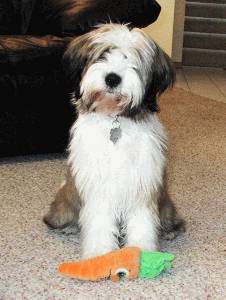
The Breed History
History records that this breed has existed for about 2000 years and
that they were monastery dogs for most of this time. Considered
good luck, they were given as gifts-never sold. The first dogs
arrived in America in 1956. They are not terriers, but this term was
applied because they were in the terrier range for size. Common
names used in Tibet included "Holy dog" or "luck bringer dog",
and because of their highly esteemed position as a lucky charm,
outbreeding was unheard of. First registration in the AKC occurred
in 1973. In general type, they resemble the Llasa Apso.
Breeding for Function
These dogs were bred for companionship and as monastery
watchdogs. They may have been used to herd, though this was not
their primary function.
Physical Characteristics
Height at Withers: female 14-15" (35.5-38 cm), male 15-16"
(38-40.5 cm)
Weight: 20-24 lb (9-11 kg) ideally, though can range from 18-30 lb
(8-13.5 kg)
Coat: It is a profuse double coat, the feet are well haired (snowshoe
feet), and lots of hair falls over eyes and face. The undercoat is
wooly and soft, the outer coat hairs are straight or wavy, fine in
texture, and though long, the coat should not reach the ground.
Colors include golden, sable, cream, silver, white and black in solid
and parti-color.
Longevity: 13-15 years
Points of Conformation: Compact and squarely built, their high
set medium length tail curls over the back and is well feathered. It
is acceptable for the tail to be kinked at the tip. The feet are large
and flat, with long hair between toes and over the feet. The skull is
domed and moderate in width with a well-defined stop. The nose
is black, eyes are dark brown and moderately deep-set, palpebral
margins are dark and the eyelashes long. Ears are pendulous,
triangular and well feathered. The topline is level, and heavy
furnishings occur on the chest and legs. The ribs are well sprung,
thorax is of moderate depth, limbs straight boned, and dewclaws
may be removed. The gait is agile and smooth, with good drive.
Recognized Behavior Issues and Traits
Reported attributes of the breed include: Intelligent, friendly, very
good with children, can be aloof with strangers, loyal, low exercise
needs, fairly easily trained, and a good alert barker. They have
moderate grooming requirements and low doggy odor and they are
considered low shedders. Tibetan terriers are adaptable to country
or city living, including apartments. They have calm personalities
but enjoy play activities.
Normal Physiologic Variations
None reported
Drug Sensitivities
None reported
Inherited Diseases
Patella Luxation: Polygenically inherited laxity of patellar ligaments,
causing luxation, lameness, and later degenerative joint disease.
Treat surgically if causing clinical signs. OFA reports 7.8% affected.
Hip Dysplasia: Polygenically inherited trait causing degenerative
joint disease and hip arthritis. OFA reports 5.8% affected.
Elbow Dysplasia: Polygenically inherited trait causing elbow
arthritis. OFA reports 3.9% affected.
Ceroid Lipofuscinosis (CL, Neuronal Ceroid Lipofuscinosis, NCL):
Autosomal recessive, slowly progressive disorder beginning with
retinal degeneration and nyctalopia from 3-6 years of age. Affected
dogs then progress to cerebellar ataxia and dementia. Reported at a
frequency of 1.0% in the 2003 TTCA Health Survey. A genetic test is
available.
Primary Lens Luxation (PLL) and Secondary Glaucoma: An
autosomal recessive primary lens luxation occurs in the breed due
to abnormalities of the suspensory apparatus of the lens (zonule).
Homozygous affected dogs usually develop lens luxation between 3
to 8 years of age, but has been seen as early as 14 months. Rarely,
heterozygous carriers can develop lens luxation, but at a later age.
Often progresses to secondary glaucoma. Relative risk of 3.69x
versus other breeds. Identified in 0.32% of Tibetan Terriers CERF
examined by veterinary ophthalmologists between 2000-2005.
CERF does not recommend breeding any Tibetan Terrier with lens
luxation. A genetic mutation has been identified, and a genetic test
is available. OFA testing shows 27% carrier, and 1% affected.
Progressive Retinal Atrophy (PRA): An autosomal recessive, early
onset form of PRA occurs in the breed. Causes progressive blindness,
beginning with night blindness at approximately 1 year of age.
Identified in 0.49% of Tibetan Terriers CERF examined by veterinary
ophthalmologists between 2000-2005. CERF does not recommend
breeding any Tibetan Terrier with PRA. There is no genetic test.
Disease Predispositions
Hypothyroidism: Inherited autoimmune thyroiditis. 17.7% positive
for thyroid autoantibodies based on testing at Michigan State
University. (Ave. for all breeds is 7.5%).
Allergic Dermatitis: Inhalant or food allergy. Presents with pruritis
and pyotraumatic dermatitis (hot spots). Reported at an increased
frequency versus other breeds. Reported at a frequency of 7.9% in
the 2003 TTCA Health Survey.
Umbilical Hernia: Congenital opening of the body wall at
the umbilicus. Requires surgical closure if large. Reported at a
frequency of 5.5% in the 2003 TTCA Health Survey. Unknown mode
of inheritance.
Persistent Pupillary Membranes: Strands of fetal remnant
connecting; iris to iris, cornea, lens, or involving sheets of tissue.
The later three forms can impair vision, and dogs affected with
these forms should not be bred. Identified in 4.91% of Tibetan
Terriers CERF examined by veterinary ophthalmologists between
2000-2005.
Deafness: Congenital sensorineural deafness can be unilateral
of bilateral. Diagnosed by BAER testing. Reported at a frequency
of 3.1% in the 2003 TTCA Health Survey. Unknown mode of
inheritance.
Missing Teeth: Reported at a frequency of 2.6% in the 2003 TTCA
Health Survey. Unknown mode of inheritance.
Cataracts: Anterior cortex punctate cataracts predominate in the
breed. Non-congenital cataracts have a heritability of 0.13, and are
76% correlated to PRA in the breed. Reported in 5.92% of Tibetan
Terriers presented to veterinary teaching hospitals. Cataracts
between 2-7 years of age are reported at a frequency of 2.2% in
the 2003 TTCA Health Survey. Identified in 2.39% of Tibetan Terriers
CERF examined by veterinary ophthalmologists between 2000-2005.
Unknown mode of inheritance. CERF does not recommend breeding
any Tibetan Terrier with a cataract.
Distichiasis: Abnormally placed eyelashes that irritate the
cornea and conjunctiva. Can cause secondary corneal ulceration.
Identified in 1.47% of Tibetan Terriers CERF examined by veterinary
ophthalmologists between 2000-2005.
Corneal Dystrophy: Epithelial/stromal form of corneal opacities.
Identified in 1.47% of Tibetan Terriers CERF examined by veterinary
ophthalmologists between 2000-2005.
Diabetes Mellitus: Sugar diabetes due to immune mediated
destruction of the pancreatic beta cells. Treat with insulin injections,
diet, and glucose monitoring. Identified as a breed at increased risk
of developing diabetes.
Idiopathic Epilepsy: Inherited seizures can be generalized or partial
seizures. Control with anticonvulsant medication. Reported at a
frequency of 0.5% in the 2003 TTCA Health Survey.
Renal Dysplasia: Affected dogs can succumb to renal failure
from birth to two years of age. Mildly affected dogs can live
with compensated renal insufficiency. A direct genetic test for a
dominant susceptibility gene is available. (Affected dogs all have
one copy of the gene, but most dogs with the gene will not develop
kidney failure.)
Vestibular Disease: An inherited, congenital unilateral peripheral
vestibular syndrome occurs in the breed. Clinical signs include head
tilt, circling, and ataxia. Unknown mode of inheritance.
Hemophagocytic Syndrome: Proliferative disorder of activated
macrophages that is associated with multiple blood cytopenias.
Can be idiopathic, or secondary to infectious, neoplastic, or
immune-mediated diseases. Can be fatal depending on the
underlying disease. The Tibetan Terrier breed is overrepresented in
dogs with the condition.
Brachygnathism, Polydontia, Prognathism, Retinal Dysplasia,
and von Willebrand's Disease are reported.
Isolated Case Studies
Recurrent Flank Alopecia (Seasonal Flank Alopecia): Case
report of a 2-year-old, male, neutered Tibetan Terrier with winter
flank alopecia. The disorder is characterized by episodes of truncal
non-scarring alopecia (and often hyperpigmentation) that usually
occur on a recurrent, seasonal basis. Diagnosis is by clinical signs
and biopsy.
Malignant Histiocytosis: An 8-year-old male Tibetan Terrier
showed prolonged astasia, complete paralysis, tic-like signs,
and seizure and died 2 months after the onset of symptoms.
Histopathologic diagnosis was diffuse leptomeningeal malignant
histiocytosis of the brain and spinal cord.
Genetic Tests
Tests of Genotype: A direct test for NCL is available from the OFA.
A direct test for PLL is available from the OFA and Animal Health
Trust.
A direct test for a dominant renal dysplasia susceptibility gene is
available from Dogenes.
Tests of Phenotype: CHIC Certification: Required testing includes
hip radiographs, annual CERF eye examination and BAER testing
for deafness. Recommended tests include patella evaluation, elbow
radiographs, and thyroid profile including autoantibodies.
Recommended cardiac examination.
Miscellaneous
- Breed name synonyms: Dhokhi Apso
- Registries: AKC, UKC, CKC, KCGB (Kennel Club of Great Britain),
ANKC (Australian National Kennel Club)
- AKC rank (year 2008): 96 (626 dogs registered)
- Internet resources: Tibetan Terrier Club of America:
www.ttca-online.org
Tibetan Terrier Club of Canada: www.tibetanterriercanada.com
Tibetan Terrier Association of the U.K.: www.the-tta.org.uk
Photo Gallery of Breed - Tibetan Terrier - Dog Breed
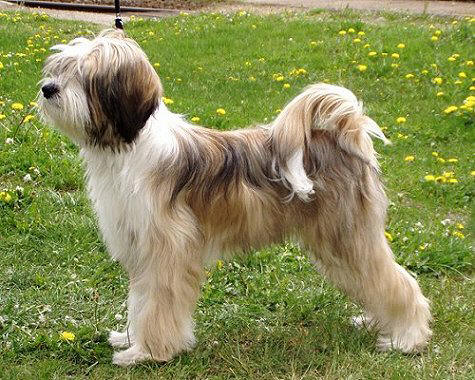
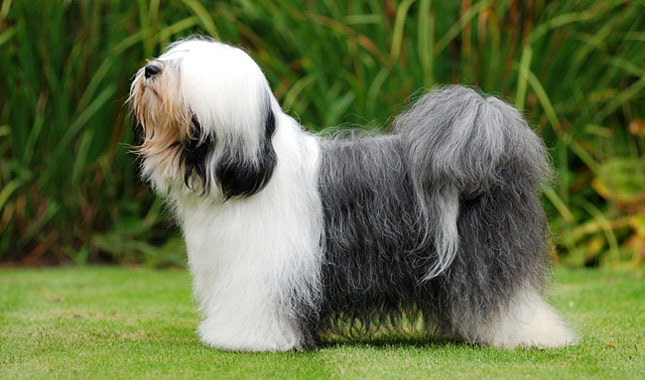
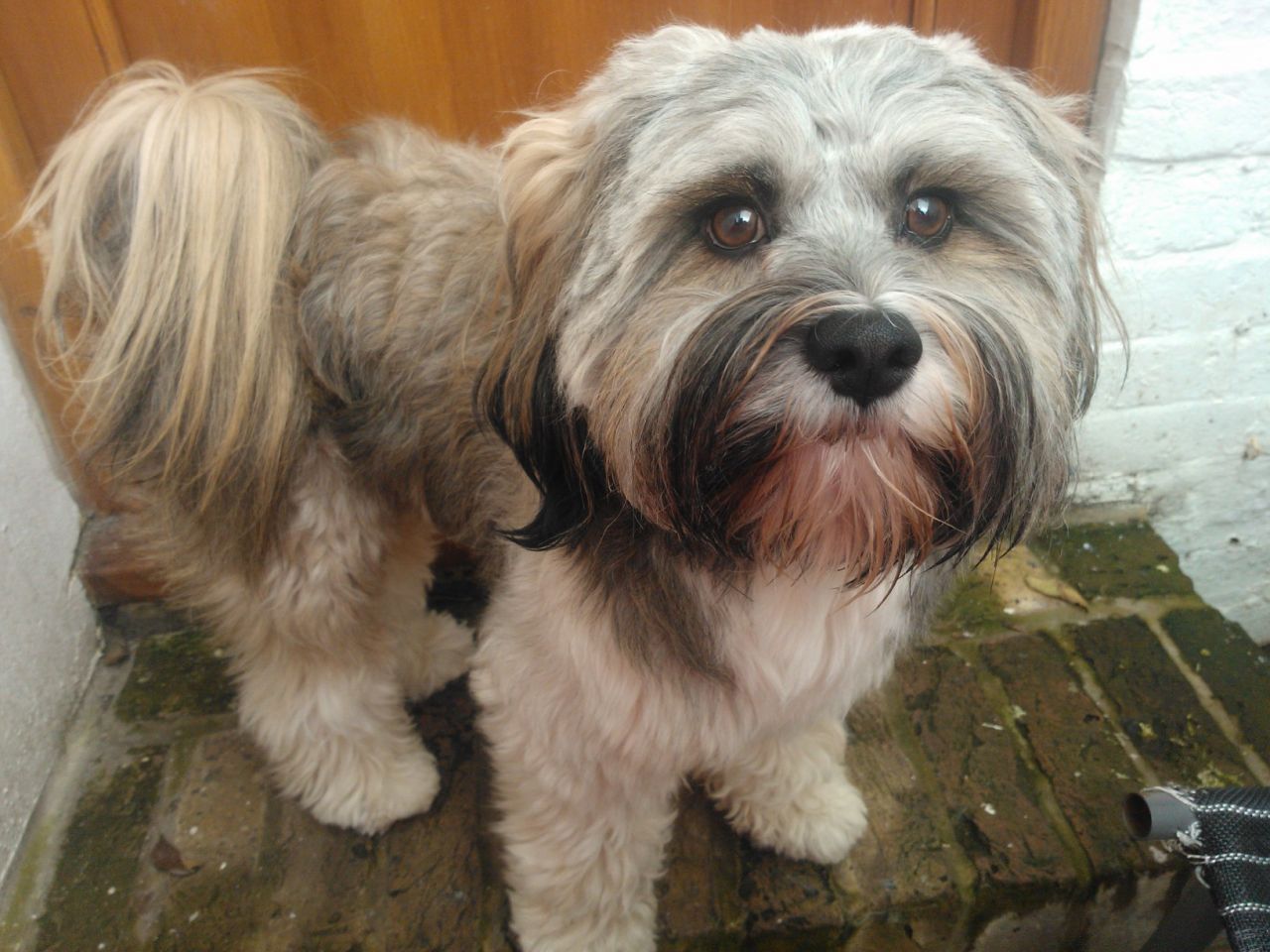


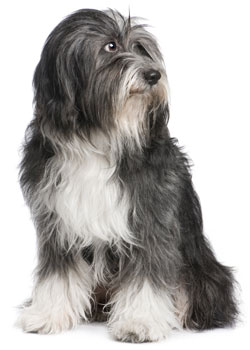
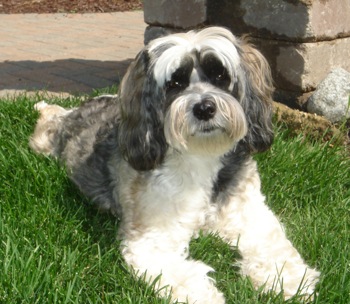

 Animalia Life
Animalia Life